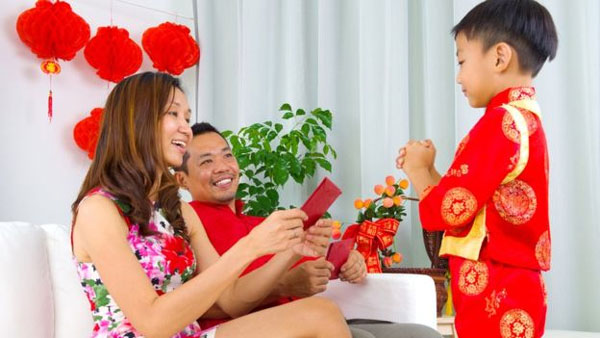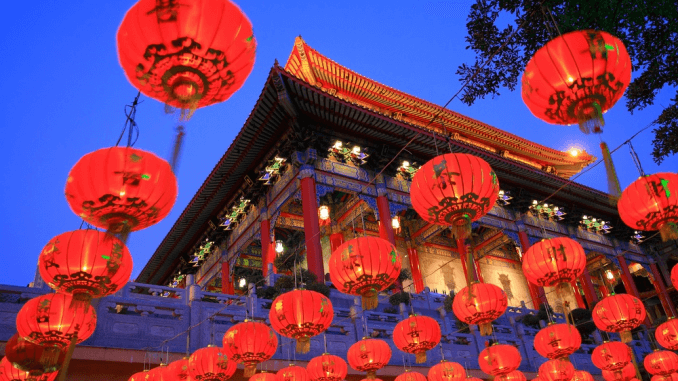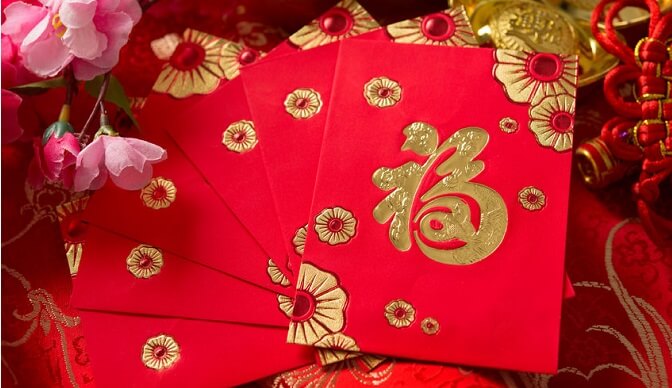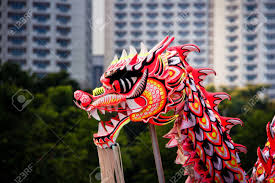How do Chinese Kids Celebrate the New Year
Chinese New Year (CNY) is the most important holiday in China, imagine Christmas, Easter, and New Year all rolled into one. Understanding the meaning of cultural events like this paves an easy way to learn Chinese. We have talked about this before. But do you know what does this holiday mean to children in China? They have a holiday that over lasts a month! Take a look at the year of the dog for China.
New Years is a holiday steeped in tradition, with each day having its own specific meaning and rituals, but at the heart of it is the concept of family. Because of this, CNY also spells the start of mass winter migrations leaving cities empty as workers return to their hometowns. This time is especially precious for children as they get a much-welcomed break from schoolwork and get to enjoy a week filled with fun and food. Because children are young there are some festivities they won’t take part in. Also, different provinces and towns will have their own traditions, but here is how most families and children celebrate Chinese New Years.

Dates
The last Chinese New Year celebration took place from mid-February of 2018 and, in fact, it will be held on different dates in 2019, 2020, and each year thereafter.
Chinese New Year is not based on the Gregorian calendar with which (most) Westerners are familiar. Chinese calendar years correspond roughly to Gregorian calendar years, with each year roughly corresponding to a lap around the sun. The months, however, are determined by the moon, with each month corresponding to a full cycle of the moon. While the Gregorian calendar is corrected by adding a leap day, the Chinese lunar calendar is corrected by adding a leap month! Because of these factors, Chinese New Year can fall anytime between the end of January and the middle of February each year.
It might seem strange, but if you’re looking at it from the perspective of the Chinese lunar calendar instead, it’s the Western New Year celebration that changes dates each year!

Customs
If you’re like most Westerners, you look forward to a day off of work or school to relax (and perhaps recover) after a night of festivities.
First, they don’t take a day off. They may take anywhere from a week to a month off! Family owned businesses, even in booming downtown areas, may remain vacant for extended periods of time around Chinese New Year.
If you’re feeling jealous while picturing mobs of Chinese people partying like it’s Western New Year’s Eve for weeks on end, however, your envy is misplaced. Chinese New Year’s Eve is much closer to American Thanksgiving than it is to Western New Year’s Eve. Families gather round and enjoy a long and hearty meal. Afterward, however, unlike either of these Western holidays, Chinese people will often make jiaozi, Chinese dumplings, which they will eat around midnight.
Chinese New Year is a time for family, and that means traveling to meet family who may be in very remote towns, villages, and rural areas. When costs are a concern, it is quite common to take trains for as long as a full day to travel back to one’s hometown.
Red Envelopes
The best part of Chinese New Year, however, is “Hong Bao”. “Hongbao”, or red envelopes, are special little red packages containing money. Giving out hong bao to friends and relatives during Chinese New Year is a great way to show your affection. As an added bonus, you don’t ever need to worry about getting the “right” gift – just make sure you don’t stuff your envelopes with an unlucky amount! To learn about that, though, you’re going to have to tune in another time.
Read more>> Chinese Red Envelopes from Lingo Bus, Win a Coupon with up to 50% Off!
I think this is the most exciting part of Chinese New Years for most people. Children are handed money in red envelopes as New Year’s gift. The red envelopes are often decorated with Chinese characters, the Zodiac animal (this year it’s the dog) or they can be plain red. Recently, with the increasing use of Wechat for those that live far away from family, they may receive Wechat red packets during New Years. It can be turned into a fun craft activity having children create their own red envelope.

Fireworks
One of the five iconic inventions accredited to China, it’s not a celebration if fireworks are not involved. Health and safety don’t stop children from taking part in setting off fireworks and playing with sparklers, notably outside windows to scare the bad spirits away with the loud noises. Fireworks scare the bad and usher in the new year with their loud noise and bright lights.

Dragon dance
A well-loved New Years sight is the dragon dance. These are often seen at the temple fayres. Temples and parks across the city will have lots of food, games, rides, and shows available for families to enjoy. The dragon dance is normally the highlight of the shows. Students may also take part in their own dragon dances at school, or even create their own dragon dance by making their own dragon puppet.

Decorations
Since New Years means “out with the old in with the new”, it involves cleaning the house, wearing new clothes and decorating the house. I’m sure most children would be happy about shopping for new clothes and decorations but not so much about the cleaning! Chinese New Years decorations are not as extravagant as Christmas decorations. They normally tend to involve paper lanterns or paper cutouts that children can make themselves.
Remember the most important thing about Chinese New Years is spending time with family, the most important day of Chinese New Years is spent watching the CNY gala and eating a feast made up of beautifully-cooked Chinese food such as dumplings, a favorite CNY dish.

Register to Book A Free Chinese Class for Your Child
Chinese New Year Event (Lingo Bus 2019)
Who can participate?
Calling Lingo Bus parents, teachers, and friends who know children who are—
- Chinese language learners aged 5-12 (non-native speakers)
- Interested in Chinese culture and traditions
- Passionate about education and helping children in need
When does this happen?
Video collection: January. 1st-15th , 2019
Best videos published: January. 23rd , 2019
How to participate?
1. Recruit your group of children who are interested in participating
2. Make a video of of them answering a list of 12 questions about Chinese New Year traditions. Questions provided in Chinese & English. Children are encouraged to answer them at least partly in Chinese, but they can fill in the blanks with English or their native tongue as well.
3. Email your video clip to LingoBusChinese@gmail.com
4. Your video submission will be confirmed and noted for a $10 donation to Adream Foundation.
5. With your permission, your clip might be selected for our 2019 Chinese New Year special video . Participants appearing in the special video will receive 2 free Lingo Bus 1-on-1 Chinese classes ($40), and share their stories with children and families around the world.
A few tips on making your video stand out:
1.Take the video somewhere with ample light (natural light always works the best!) and clear background.
2.Take the video horizontally (digital cameras are the best, but smartphones work as well!)
3.The most precious moments in life come naturally, and kids are the cutest in their natural habitat! So don’t worry about getting the ‘right answer’ from your kids or filming the perfect video.
Question Bank
1. How does everyone celebrate Chinese New Year at where you live?
2. Can you name the 12 animals of Chinese Zodiac? Do you know what your Zodiac sign is? What is the Zodiac animal for 2019?
3. What Chinese food would you like to eat during Chinese New Year, and why?
4. Who do you want to celebrate Chinese New Year with the most, and why?
5. Do you know what Red Envelopes are? What’s inside the Red Envelopes?
6. When children grow up, they stop receiving Red Envelopes during Chinese New Year. In your opinion, at what age should children stop receiving Red Envelopes, and why?
7. If you receive a Red Envelope for this year’s Chinese New Year, how will you spend them? Will you buy gifts for someone?
8. In your opinion, what are some things you need to do for a lucky Chinese New Year?
9. If you could go to any Chinese cities for Chinese New Year, where would you go, and why?
10. It’s almost Chinese New Year. What would you like to tell your Chinese friends and your Chinese teacher?** Could you tell me in Chinese? **
11. If you could create your own Chinese New Year tradition, what would you like it to be?
12. Would you like to celebrate Chinese New Year with a special performance? e.g. Sing a Chinese song, read a Chinese poem, etc
If you have any questions about this event, please feel free to contact us at LingoBusChinese@gmail.com.
Start Learning Chinese in the next 30 Seconds
Copyright Notice: Everyone is welcome to forward the articles in this blog as long as the links to these articles are also included.


Simply desire to say your article is as astounding. The clarity in your post is just nice and i
can assume you’re an expert on this subject. Fine with your permission let me to grab your
feed to keep up to date with forthcoming post. Thanks a million and
please continue the rewarding work.